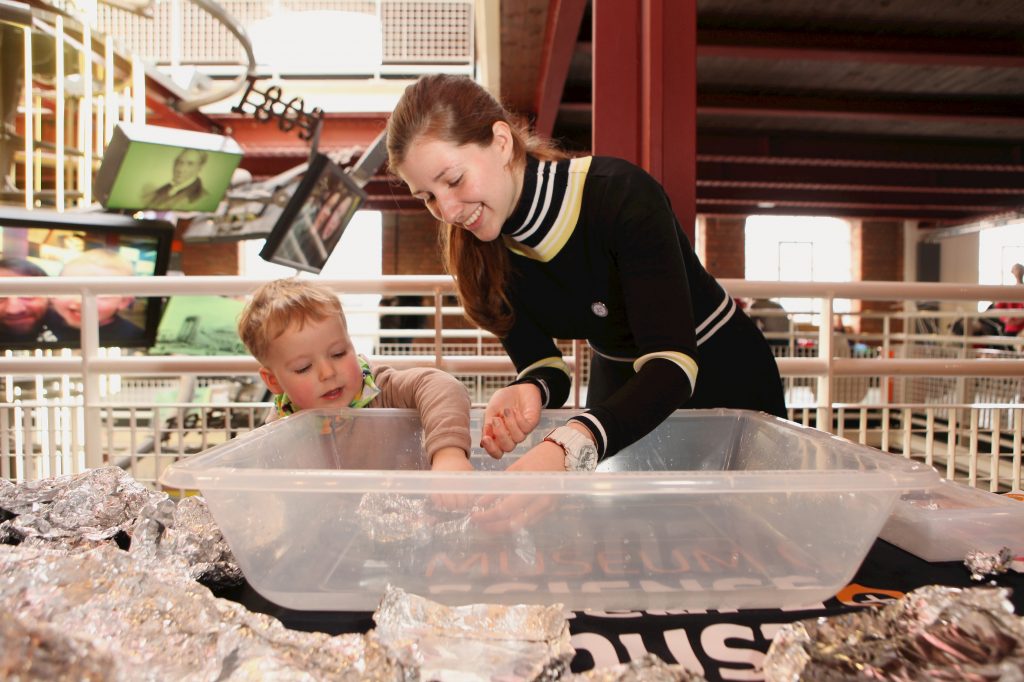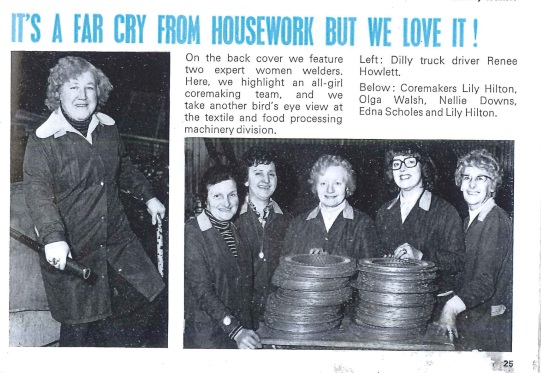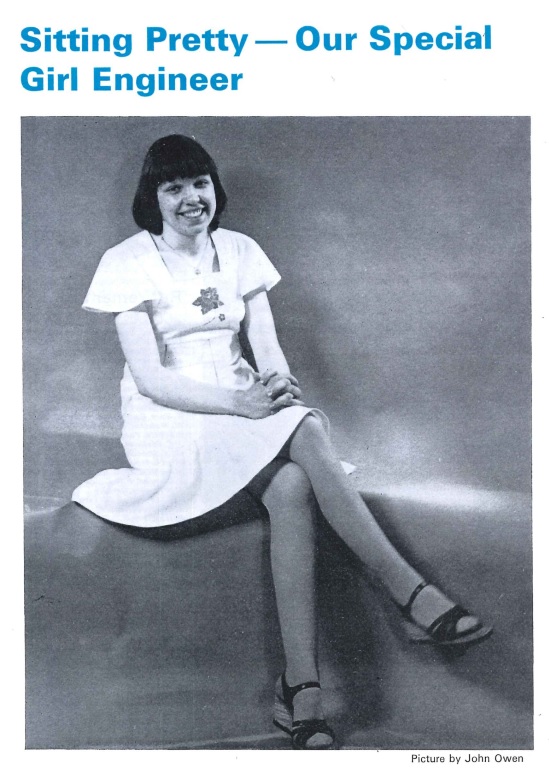For a recent family day, the museum welcomed a group of enthusiastic engineers to deliver fun challenges for our visitors. Whether it was through building the tallest straw tower, making tin foil boats or filtering out the component colours in felt tips, families were encouraged to flex their problem-solving muscles while chatting to inspiring role models with a passion for engineering.
It was a fantastic opportunity to debunk stereotypes about what engineers actually do. They weren’t all kitted out in boiler suits brandishing a spanner! Even more surprising perhaps, was that all our engineers were women.

In the spirit of International Women’s Day, we put a call out to women working in industry to share their experiences with visitors. While there is no denying that we still have a long way to going in terms of engaging young women into the possibility of taking up a career in engineering, it is clear from the hugely positive response that female engineers working today love their jobs and are keen to shout about what they do.
Rewind fifty years and the challenges for women hoping to embark on a career in engineering may have seemed even more insurmountable, but even then there were inspiring individuals flying the flag for the female engineer.

While exploring our archive collection, we delved into the journals of local engineering company Mather and Platt. These journals were published regularly to share stories, not just about the successes of the business as it expanded across the globe, but also the day to day highlights of its workers. Spotlights on people getting married, having babies, inter-departmental football games and Barbara flaunting a fabulous new hairstyle around the office, give a clue to the upbeat tone. This is a company that looked after its workers and whose workers seemed to love their jobs.
There was certainly no shortage of female employees at Mather and Platt either. The interesting, and probably unsurprising part is the difference between the types of jobs these women did as opposed to their male co-workers. While apprentices at Mather and Platt’s boys school are celebrated for their successes in mechanical engineering, pupils at the girls school are awarded for office skills, handicraft and needlework. This gender divide is a reflection of the era, but amongst these stereotypes there is a sense that things are beginning to change…
In the article entitled, ‘FASCINATING say women welders’, Dora and Lily, two pipe welders, share their love of the job and are celebrated for the fact that ‘they maintain a reputation for skilled workmanship even among male workmates’. In the same issue we meet female truck drivers and coremakers from the textiles and food processing division in, ‘It’s a far cry from housework but we love it!’
While certainly not the norm in this male-dominated world, the tone suggests that Mather and Platt were all for women taking on the challenge of doing ‘what might still be termed mainly men’s work’. These women are not trained engineers though. This is a much rarer find, showcased in a double page spread from 1977 entitled ‘Sitting Pretty — Our Special Girl Engineer’.

The first paragraph of this article says it all, and is still perhaps true for many women working today, not just in engineering but in many other sectors too:
‘Equal opportunity for women is a topical subject these days and women who make the opportunities are even more topical. Going into a man’s world means far more than equal pay. It means proving that that a woman can do man’s job with 100% efficiency – because anything less would lose the respect and professional esteem of her colleagues.’
Taking on this challenge was Alison, who at that time was the only girl graduate engineer at Mather and Platt, with a BSc in Mechanical Engineering from Nottingham University. She explains that she always wanted to work in a job that involved maths or physics, but after feeling like she wasn’t good enough at physics and not keen on becoming a maths teacher, she plumped for engineering and hasn’t looked back.
Working in Pump Design, she has a passion for computers and ‘finds the prospect of helping to design a system at Mather and Platt really exciting!’ There were no engineers in her family before her, and she comments that ‘she still has trouble convincing Granddad that she actually works for an engineering company alongside men!’
Although the article is keen to showcase Alison’s foray into the foundry in a very positive light, it is also full of justifications, trying to make sense of why a woman would want to do a job that ‘often means getting dirty’ and provokes ‘amazement and disbelief’ in all who encounter her. She is celebrated for her talent and passion for engineering, but don’t worry, ‘in her leisure time she still shares every woman’s love of dressing up’.
Thankfully, things have changed a bit since the seventies, with more and more women choosing a career as an engineer. There’s no doubt though that there are still plenty of misconceptions around engineering, who can do it and what this kind of job might look like. With 2018 as the ‘Year of Engineering’, we at the museum look forward to igniting a spark in our visitors, hopefully inspiring a few more budding Alisons in the months to come.